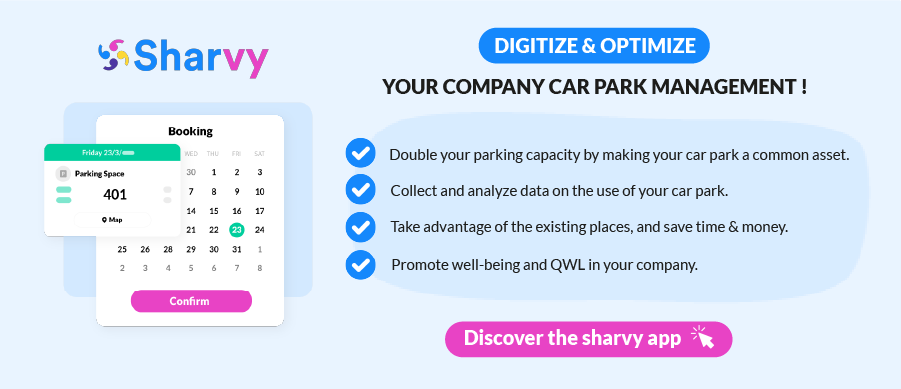There’s no doubt about it : in today’s dynamic business ecosystem, the imperative to innovate and constantly adapt is (undoubtedly) guiding organizations toward adopting new tools and technologies.
However, this transition is more comprehensive than a simple material acquisition. It requires a profound transformation of how we work, established processes, and ingrained habits.
Managing this change, sometimes subtle, sometimes tumultuous, is proving to be a complex exercise involving a series of intertwined challenges and resistances.
Consequently, the success of this transition depends on enlightened and strategic management, considering both technological aspirations and human resources. This article serves as a valuable guide, offering companies advice and recommendations for successful adoption so that they can confidently navigate toward a new digital horizon.
A quick reminder : what is corporate change management?
Change management involves supporting a company’s transformation process, whether in response to imposed circumstances or as part of strategic decisions voluntarily. In other words, it encompasses a set of approaches, processes, and best practices designed to support employees when implementing significant changes. These changes may result from :
- The introduction of new technologies and tools.
- Organizational restructuring.
- Adopting new working methods.
- The same applies to mergers with other companies.
Ultimately, change management support aims to minimize resistance, encourage buy-in, address employee concerns, and ensure the success of future projects.
The importance of this support is justified : organizational changes within companies can (very often) be a source of uncertainty, stress, and resistance on the part of employees. Effective change management helps to prevent these adverse reactions by communicating transparently about the objectives and benefits of change, providing support and appropriate training, and actively involving employees from the start of the process.
At the same time, change management helps to optimize business performance by encouraging adaptability, flexibility, and innovation. Encouraging an organizational culture that values change and continuous learning helps strengthen the company’s competitiveness and sustainability in a constantly evolving working environment.
In short, change management is essential for driving organizations toward success and long-term growth.
How do you ensure that a new tool is adopted? 5 steps not to be overlooked.
1. Involve all the stakeholders in the project.
To optimize the adoption of a new tool, it is crucial to engage key stakeholders early in the research and decision-making process.
In most cases, this means seeking the opinions of not only COMEX members, the Human Resources Department, and Facility Managers but also the Information Systems Department (ISD) and even staff representatives.
However, it should be noted that more than simply participating in a working group is needed to guarantee genuine commitment to the project’s success. Ensuring that each stakeholder is genuinely involved in the process is vital.
| Advice from our experts.
In the initial stages of the research and decision-making process, prioritize the tool’s simplicity and intuitiveness. The simplicity and intuitiveness of the user interface are key factors in encouraging adoption. They’re the number one criterion for all our customers when they’re looking for a Parking Management solution.
Julien FOUCHER, Director of Work Environment & Property at the UP Group, comments : “When choosing our future parking management solution, we compared the most fun and easiest to use. We even calculated the number of clicks we needed to make (to create an account and reserve a parking space) and timed the time it took. Sharvy was the winning solution, in addition to the features that the solution offered“.
Want to find out more about Sharvy : Parking Management Software? Just click here.
2. Communicate transparently from the start of the project.
From the outset of the project, you should be quick to share the intentions openly, the reasons for the changes to come, and the objectives behind adopting the new tool. As a result :
An initial communication phase should be initiated well in advance, for example, several months before the tool is deployed, to clarify its role, the needs it addresses, and the problems it solves. Please share details of the new software’s benefits, its essential functions, and the planned deployment schedule.
The second stage of communication takes place a few weeks before the system goes live. At this point, communicate the tool’s name, design, and interface to familiarise your staff with its existence. Reiterate the benefits of this tool.
The third and final stage is the actual implementation. At this stage, communication becomes more concrete. Provide data and technical information on the connection methods while highlighting the training resources and other tools available to facilitate the tool’s appropriation.
Finally, note that the most effective communication occurs through the company’s usual communication channels, whether instant messaging software (Teams, for example), e-mail, internal notice boards, or verbal discussions at group meetings. It is essential to disseminate information via the managers of each team, who are in direct contact with employees in the environment where they will be using the tool.
| Advice from our experts.
Listen diligently to your employee’s needs and expectations on the subject. By actively listening to their concerns and possible aspirations, you’ll better grasp the potential challenges. At the same time, change management will become more inclusive and personalized.
At the same time, stress the new tool’s benefits. Remember that your employees won’t just want to hear about how profitable it is for the company but also about the benefits they will be able to enjoy.
They will want to know how it will impact (directly) their working habits. That’s why it’s imperative to explicitly link the tool’s benefits to your employees’ individual needs : how it simplifies their tasks and daily lives, eases their responsibilities, optimizes their work processes, and increases their productivity. They need to be fully aware of the tool’s benefits as well as the shortcomings of the existing system.
Finally, show confidence and enthusiasm about the changes and be optimistic.
3. Support and train your employees, then appoint ambassadors for the project.
Not all employees will be as easy or motivated to adapt to new tools. That’s why it’s essential to define a change management strategy that gives your employees the means to succeed while minimizing their challenges as they acclimate to these new working habits.
So, reassuring and supporting your staff by implementing a training program to familiarise them with the new tool is vitally important.
At Sharvy, for example, we offer training sessions and webinars to our ambassadors and all our employees to help them understand how to use our solution. According to our customers, this support should be noticed.
Julien FOUCHER, Director of the Work Environment & Real Estate for the UP Group, says, “Sharvy is not just a technology partner; it’s a natural partner for change. The Sharvy teams provided fundamental support for the change. They organized two webinars to answer our questions and explain to the administrators and project ambassadors, using visual demonstrations, how the solution worked.
Mickael CHESSA, Facility Manager at CTG Luxembourg, adds, “The most important work was done internally, in terms of education, change management, and communication. We had to sound out people’s opinions and needs. The support provided by the Sharvy teams on this point was remarkable: They supplied us with all the procedures, templates, and practical guides to accompany the rollout of the solution. The solution was deployed in less than two weeks.
In the end, one point to bear in mind is that the difficulty of adoption and the ability to learn vary from one person to another, depending on their experience, interest, and familiarity with the technology. That’s why it’s essential that this learning process is not left to employees alone but that they are given support and access to resources to help them adapt.
| Advice from our experts.
Use and distribute (internally) various tutorials, then create easily accessible Frequently Asked Questions (FAQs) to encourage tool adoption. This will convince even the most reluctant employees!
At the same time, to avoid problems when the tool is adopted, it’s a good idea to make it easy to report anomalies and ensure that communication between your employees and your Work Environment Manager runs smoothly.
To do this, you can use the MerciYanis solution. It’s a complete solution that modernizes your workspace and makes it more human and welcoming. For example, as part of the change management process, MerciYanis can integrate 4-in-1 QR codes into your premises (car parks, workspaces, cafeteria, etc), enabling your employees to carry out various actions in an instant: for example, submitting a request, consulting documents in just a few clicks (such as tutorials on how to use a tool), etc.
Thanks to this initiative, you are promoting change management and information sharing and giving your employees a say in their working environment.
4. Mobilize the support and commitment of your directors and managers.
There’s no doubt about it : if your managers and senior executives express satisfaction and conviction about the effectiveness of the new tool, they’ll be in a better position to promote it within their teams and persuade the most reluctant.
Not least because they embody the company’s strategic vision and are perceived as authority figures, by becoming ambassadors for change, they set an example of satisfaction and can share this contagious enthusiasm!
At the same time, executives and managers are well-placed to identify and overcome potential obstacles to change. Their involvement means that challenges can be anticipated and effective strategies implemented, ensuring a smoother transition.
The successful adoption of a new tool also relies on agile project management, which allows for quick and adaptive decision-making. By actively involving managers in training on agility and collaborative methods, it is ensured that change processes are more receptive and less resistant to innovations. These practices not only strengthen the culture of transformation but also operational efficiency, by facilitating a more natural and engaged adoption among teams.
| Advice from our experts.
Leaders and managers need resources and support to succeed as catalysts for change. They, too, need to be adequately trained in the use and benefits of the new tool and in the leadership skills required to support their teams. So pay attention to this point.
5. Stay tuned & measure the impact of the new solution.
Lastly, listen carefully to your teams and get their impressions of the new tool. It’s essential that your employees feel that they’re being heard, especially if there are any difficulties.
However, more is needed to listen; it’s essential to show that you’re taking your teams’ feedback on board. Otherwise, you risk generating even more frustration.
Try to identify employees with reservations or concerns about the new solution and discuss them with them individually. You can then provide them with concrete information to answer their questions.
At the same time, encourage participation and the sharing of opinions through regular internal surveys. These will help you to implement improvements quickly.
| Advice from our experts.
At Sharvy, for example, we’ve created a model mobility questionnaire that allows your employees to express their views on their commuting habits and their needs regarding company car parks.
With this questionnaire template, you give your employees a say and let them express themselves freely. This allows you to gather their feedback and (quickly) launch improvement actions.
In conclusion
There’s no doubt about it: adopting a new tool within an organization requires effective change management, step by step.
By involving stakeholders from the outset of the project, communicating transparently, providing appropriate training, managing resistance, and listening carefully, you can create an environment conducive to acceptance and buy-in from your employees. As a result, you can maximize your chances of success in this complex transition.
Ultimately, well-orchestrated change management can transform a potentially tumultuous transition into an opportunity for the company to grow and prosper.
Have a question ? Check out the FAQ !
How can we measure the success of corporate change management?
The success of the change management process can be measured by monitoring various performance indicators linked to the adoption of the new tool, such as the application’s rate of use, user satisfaction, increased productivity, and a reduction in errors and operational incidents.
For example, when using the Sharvy application, the solution’s administrators can observe the rate at which parking spaces are shared. Previously, only managers and directors could access the company car park, but thanks to Sharvy and its fair algorithm, all employees can benefit from this advantage.
Mickael CHESSA, Facility Manager at CTG Luxembourg, explains: “The traditional policy of allocated space by name had one drawback: there was no question of a colleague taking advantage of it, even if the space was empty during the day. It’s a statutory preference that’s anachronistic given today’s practices. However, thanks to Sharvy, there has been an immediate and visible change: there are enough places for everyone on our leading site.
He points out, “For CTG employees, having a pre-booked parking space on request is, as in many urban centers where the Sharvy application is used, one less mental burden for them.”
Here are two examples of successful change management: the sharing rate (directly observable from the Sharvy application) and the user satisfaction rate.
What are the most common challenges in managing change?
The most common challenges in managing change include employee resistance and communication gaps. Inadequate or poorly targeted communication can lead to misunderstandings, rumours and misinterpretation of the objectives and benefits of change.
Similarly, rigid organisational structures, bureaucratic policies and processes can hinder the flexibility and adaptability needed to implement change effectively.
By proactively overcoming these challenges and implementing appropriate strategies, organisations can increase their chances of successfully managing change and achieving a successful transition to a new organisation of work.
Want to learn more? Check out latest articles!
Smart building : the benefits for employees and employers!
What is a smart building? What advantages does it offer? What challenges does it address? Find out in this article.
Company relocation : an opportunity to give a fresh start!
Are you about to carry out a company relocation? In this article, find out our top tips for getting the most out of your move.
Future of work : what trends and technologies lie behind this notion?
Between utopia and dystopia, what can managers expect and how can they prepare for the “Future of work” ? The answers here!
Subscribe to our newsletter!
Resources
Contact us
+44 117 463 6990






